When you're on the hunt for the oldest polo shirt brands, you can't overlook Brooks Brothers, who brought us the first mass-marketed polo back in 1896. Then there's Lacoste, co-founded by the tennis legend Jean-René Lacoste in 1933, rocking that iconic crocodile logo since the '20s. Of course, Izod jumped on the scene in the '50s, making Lacoste a must-have in America! Ralph Lauren followed in 1972 and turned this classic into a cultural icon. So, whether you're dressing up or keeping it casual, these brands have a rich story and style that's hard to resist! Wanna learn more?
Origins of Polo Shirt Brands
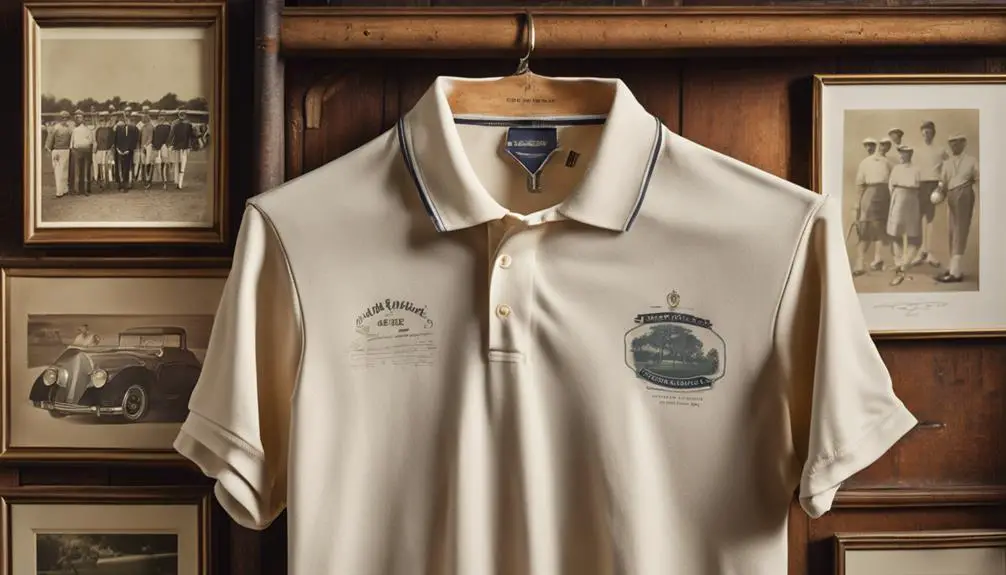
The origins of polo shirt brands reveal a fascinating evolution of style and functionality. You might think of polo shirts as everyday wear, but their history is pretty cool! Brooks Brothers, founded in 1818, kicked things off by introducing the first mass-marketed polo shirt in 1896. They were inspired by the button-down collars worn by polo players. Fast forward to 1933, when tennis champion Jean-Renée Lacoste co-founded Lacoste, bringing us the breathable pique cotton fabric and the iconic crocodile logo. This innovation paved the way for high-quality sportswear, similar to the craftsmanship found in vintage Ralph Lauren pieces. Isn't that a fun twist?
In 1951, Izod began licensing Lacoste shirts in the U.S., which made the knitted polo shirt a must-have in American fashion. Ralph Lauren then entered the scene in 1972 with his version, focusing on quality and style, and that really boosted the polo shirt's popularity. You've probably heard of John Smedley too, known for their craftsmanship, and GANT, who introduced the rugby shirt as a cool variation of the classic polo. So, next time you throw on a polo, remember its rich history and how it transformed from sportswear to a fashion staple! Isn't that awesome?
Early Innovators in Polo Shirts
During the early 20th century, several key innovators reshaped the polo shirt into the stylish garment we recognize today. It all started with Brooks Brothers, who introduced the first mass-marketed polo shirt in 1896. They were inspired by polo players in England, who used button-down collars to keep their shirts neat during matches. This innovation parallels the evolution of iconic brands like Abercrombie & Fitch, which shifted from outdoor gear to contemporary fashion, reflecting broader cultural shifts in style and branding. Then, in the 1920s, Jean-Renée Lacoste took the polo shirt to the next level. He created a short-sleeved, three-button shirt made from breathable pique cotton, perfect for tennis players looking for comfort and movement.
You might know Lacoste for its famous crocodile logo, which debuted in 1927 and quickly became a symbol of sporty, leisure-class style. The logo evolution in fashion branding often plays a significant role in identifying vintage items. Fast forward to 1951, when Izod snagged the rights to produce Lacoste shirts in the U.S., helping to spread the polo shirt craze even further. And let's not forget Ralph Lauren, who launched his own version in 1972. He emphasized quality and style, transforming the polo shirt into a cultural icon and a must-have for preppy sportswear. So, how do you wear yours?
Iconic Brands of the 20th Century

Iconic brands that emerged in the 20th century have left an indelible mark on the polo shirt's evolution. Think about it—polo shirts have become a fashion staple, thanks to some amazing innovators. Brooks Brothers kicked things off in 1896 with their button-down collar design, perfect for keeping things neat during a match. This design, reminiscent of the structured appearance of Oxford shirts, emphasized sophistication while maintaining comfort. Then, in the 1920s, Lacoste took the polo shirt to new heights. With his breathable pique cotton and that famous embroidered crocodile, he made sporty chic a thing!
When Izod snagged the U.S. rights to produce Lacoste shirts in 1951, it really boosted the brand's popularity, making the polo shirt a must-have in American fashion. Fast forward to 1972, when Ralph Lauren launched his version, promoting it with the catchy slogan, "It gets better with age." And boy, did it! By the late 20th century, polo shirts became a go-to for casual business attire, proving they're not just for the tennis court or polo field. So, whether you're dressing up or down, these iconic brands guarantee you always look stylish. Isn't it cool how a simple shirt can carry such history?
Evolution of Polo Shirt Designs
Polo shirts have undergone significant transformations since their inception, reflecting changes in both fashion and function. Remember when Jean René Lacoste kicked off this classic design in the 1920s? He created a short-sleeved, breathable polo shirt made from piqué cotton, perfect for comfort and movement in sports! Then, John E. Brooks added button-down collars in the late 19th century to keep things stylish and practical during play. Fast forward to 1972, when Ralph Lauren launched his colorful version, complete with that iconic pony logo, turning the polo shirt into a fashion staple.
But it doesn't stop there! In the late 1960s, designers introduced synthetic materials, making polo shirts resistant to fading and wear. Nowadays, we see cool features like stay-flat collars and moisture-wicking fabrics, keeping you fresh and looking sharp all day long. Isn't it amazing how the evolution of the polo shirt has enhanced both style and comfort? Whether you're hitting the tennis court or grabbing a casual bite, there's a perfect polo shirt design just for you! So, what's your favorite polo shirt style?
Cultural Impact and Popularity
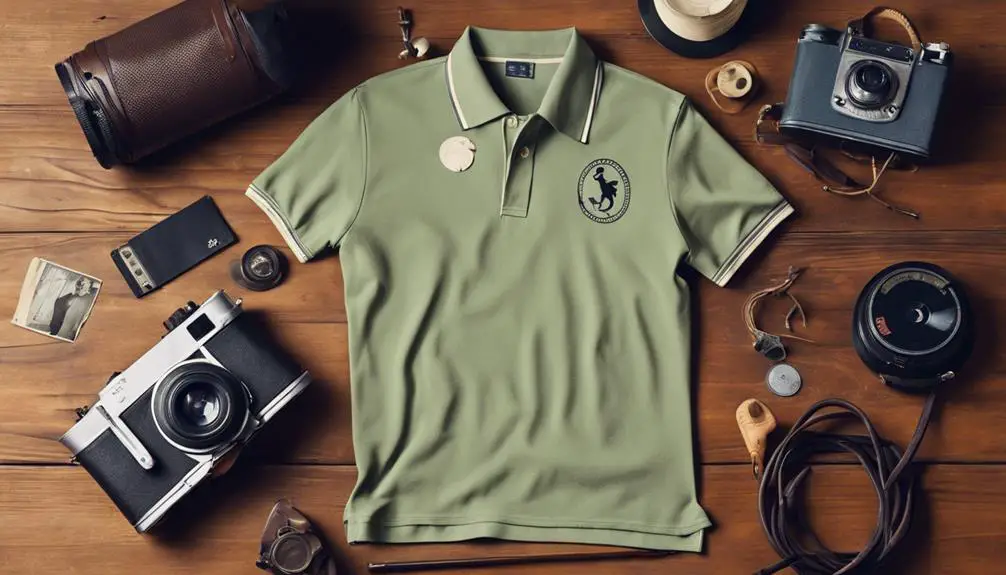
The cultural impact of the polo shirt is undeniable, as it's become a symbol of style and status across various demographics. You can thank brands like Lacoste and Ralph Lauren for turning this simple shirt into a cultural icon. The legacy of excellence established by Lacoste, particularly through its first branded tennis shirt, played a significant role in transforming athletic wear into everyday fashion. Remember the 1970s? Ralph Lauren skyrocketed the popularity of polo shirts, making them essential for casual and smart-casual wardrobes everywhere.
What's cool is how the polo shirt evolved from athletic wear to a fashion statement. It's embraced by various subcultures, including the Ivy League crowd and even the Hip-Hop scene. You'll spot polo shirts in lifestyle branding, often linked to luxury leisurewear, and they've been endorsed by celebs, making them even more relevant.
Plus, you'll find that these shirts are super adaptable. No matter your age or style, there's a quality polo out there for you. People are willing to spend on high-quality versions, keeping brands on their toes to maintain that cultural status. So, whether you wear it on a yacht or just chillin' at home, the polo shirt's popularity isn't going anywhere! Isn't that awesome?
Modern Adaptations of Classic Styles
When you think about classic styles, it's fascinating to see how they've been reimagined for modern tastes. Take polo shirts, for example. Brands like Lacoste, founded by the legendary tennis player Jean Rene Lacoste, and Ralph Lauren have added moisture-wicking materials to keep you cool and comfy during those hot days. Plus, they've introduced stay-flat collars and reinforced seams, so you look sharp whether you're at a barbecue or a semi-formal event. The evolution of Lacoste's logo over the decades showcases how the brand has maintained its identity while appealing to contemporary audiences, making their shirts timeless pieces. And let's not forget the cool details! You'll notice embroidered logos that give these shirts a fresh twist while honoring their heritage. Eco-conscious brands like BAOBAB are even using high-quality Peruvian Pima cotton, showing that classic styles can be stylish and sustainable. How awesome is that?
Modern adaptations also include tailored fits and hybrid designs, making it easy to dress up or down. Need a quick change? Some polos even have zippers! This versatility means there's a perfect polo for everyone, whether you love the classic look or want something trendy. So, the next time you reach for a polo shirt, remember: you're not just wearing a shirt; you're rocking a piece of evolving fashion history!
Sustainability in Polo Shirt Production
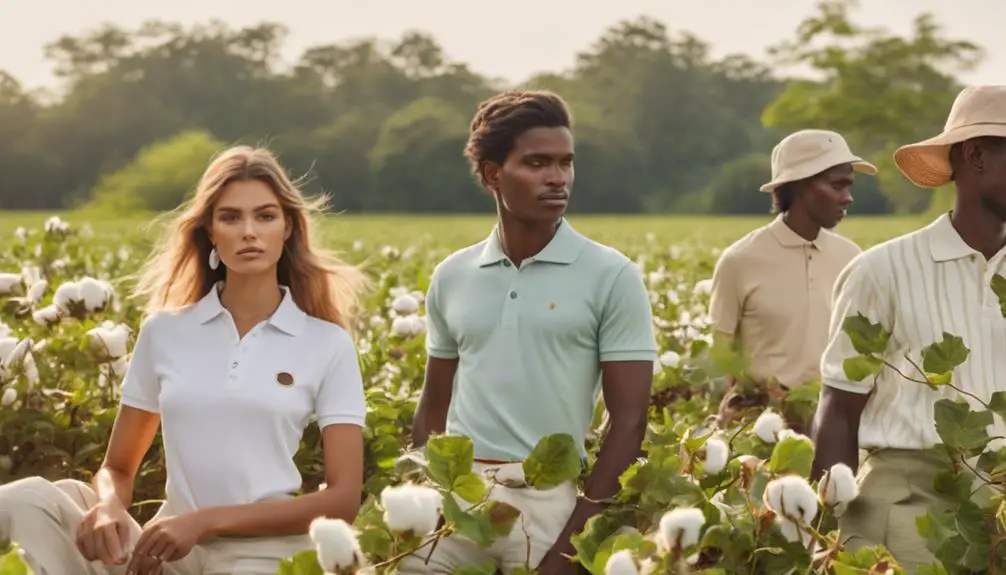
As fashion evolves, sustainability has become a key focus in polo shirt production. You might be surprised to learn that many brands are now using eco-friendly materials like organic cotton and recycled polyester. This helps cut down the environmental impact of making clothes. Brands like BAOBAB are leading the way, using high-quality Peruvian Pima cotton and creating eco-conscious designs that aim to reduce fashion waste.
What's even cooler? These sustainable polo shirts often use durable fabrics with antimicrobial properties. This means they last longer and you don't have to wash them as often—great for water conservation! Plus, many companies are stepping up their game with responsible sourcing practices, which helps lower carbon footprints and guarantees fair treatment for workers.
You might think sustainable fashion is just a trend, but over 66% of shoppers are willing to pay more for eco-friendly clothes. So, when you choose a polo shirt that's made with care, you're not just looking stylish—you're making a positive impact. Who knew looking good could feel this good? Grab a sustainable polo and join the movement!
Frequently Asked Questions
Which Brand Is Most Famous for Its Polo Shirts?
When it comes to polo shirts, Ralph Lauren takes the cake. Its iconic designs and vibrant colors embody polo shirt history. You'll find it perfect for various occasions, fitting both casual and sporty styles seamlessly.
Is Lacoste the Original Polo?
Lacoste isn't the original polo, but its history shaped polo shirt origins considerably. Renée Lacoste's designs influenced tennis apparel evolution and left a lasting fashion industry impact, distinguishing it from Ralph Lauren's iconic styles.
Why Are There 2 Polo Brands?
You'll find two polo brands due to their distinct identities. Each brand influences polo shirt history through iconic designs and marketing strategies, creating a fashion brand rivalry that shapes athletic trends and cultural influences with celebrity endorsements.
How Old Is Polo Clothing Brand?
Polo clothing brands have evolved considerably since their inception. You'll discover iconic polo designs, vintage styles, and various materials. Explore trends, colors, and care tips as you appreciate the rich history and fit of polo shirts.



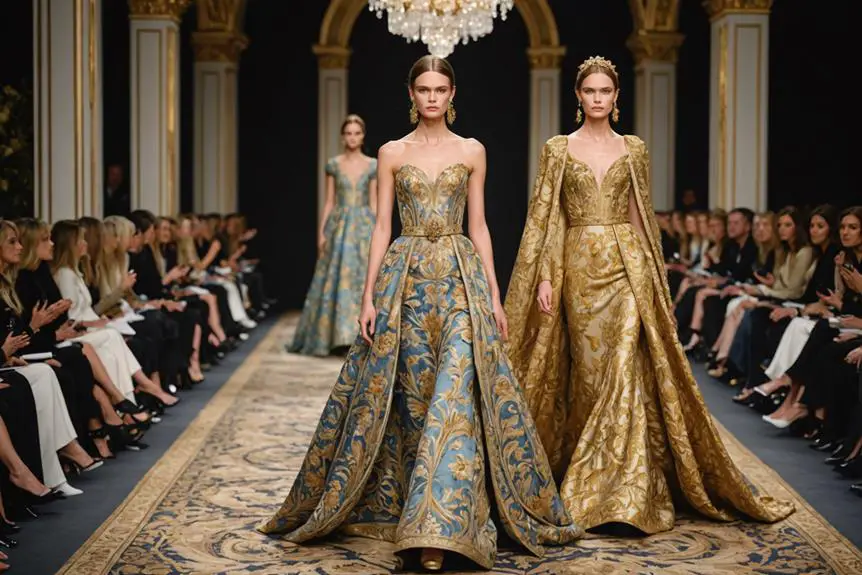
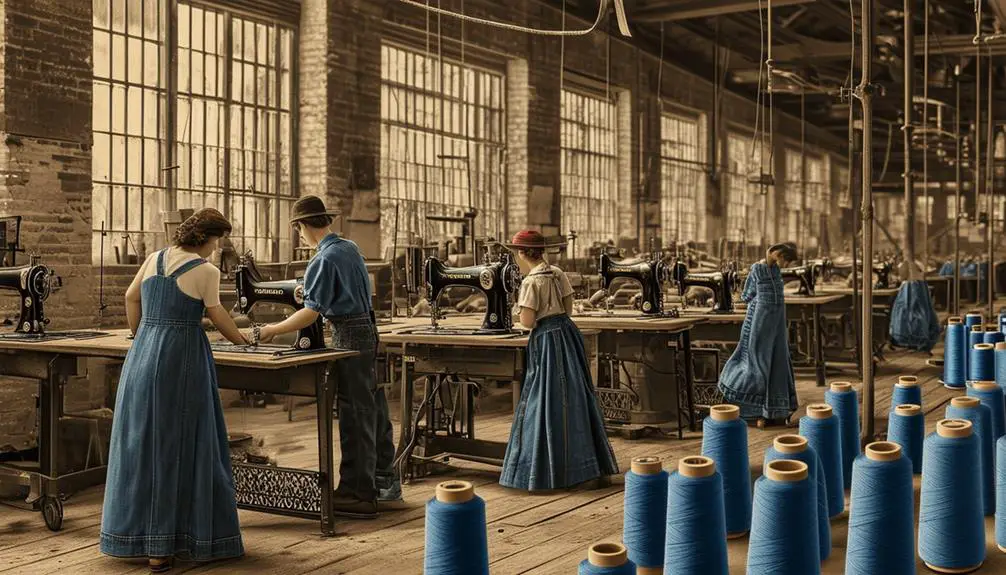
Thanks , I’ve just been looking for information approximately this topic for a while and yours is the greatest I’ve found out so far. But, what about the conclusion? Are you certain about the supply?
This is my first time visit at here and i am actually happy to read everthing at alone place.
Nice post. I learn something totally new and challenging on blogs I stumbleupon on a daily basis.It will always be useful to read through content from other authors and use a little something from other websites.
When I initially commented I clicked the “Notify me when new comments are added” checkbox and now each time a comment is added I get several emails with the same comment. Is there any way you can remove people from that service? Many thanks!
I am genuinely thankful to the owner of this web page who has shared this fantastic post at here.
Heya i am for the first time here. I found this board and I to find It truly helpful & it helped me out much. I hope to offer one thing back and help others like you aided me.
Hi there, just became alert to your blog through Google,and found that it is truly informative. I am gonna watch outfor brussels. I’ll be grateful if you continue this in future.Lots of people will be benefited from your writing.Cheers!
What’s Going down i’m new to this, I stumbled upon this I have discovered It absolutely useful and it has aided me out loads. I am hoping to give a contribution & assist other users like its helped me. Great job.
First off I would like to say superb blog! I had a quick question which I’d like to ask if you don’t mind. I was interested to find out how you center yourself and clear your thoughts before writing.I have had a difficult time clearing my mind in getting my ideas out there.I truly do take pleasure in writing but it just seems like the first 10 to 15 minutes are
Hiya! Quick question that’s totally off topic. Do you know how to make your site mobile friendly? My site looks weird when browsing from my apple iphone. I’m trying to find a template or plugin that might be able to correct this issue. If you have any suggestions, please share. http://www.kayswell.com
When I initially commented I clicked the “Notify me when new comments are added” checkbox and now each time a comment is added I get several emails with the same comment. Is there any way you can remove people from that service? Many thanks!
These are actually great ideas in about blogging. You have touched some pleasant things here. Any way keep up wrinting.
Spot on with this write-up, I really believe this site needs much more attention. I’ll probably be returning to read through more, thanks for the info!
Pretty! This has been an incredibly wonderful post. Thank you for providing this information.
Right here is the perfect blog for everyone who hopes to find out about this topic. http://www.kayswell.com You understand so much its almost hard to argue with you (not that I actually will need to…HaHa). You definitely put a freshspin on a topic that has been written about for decades.Excellent stuff, just great!
Hi there, just became alert to your blog through Google,and found that it is truly informative. I am gonna watch outfor brussels. I’ll be grateful if you continue this in future.Lots of people will be benefited from your writing.Cheers!
I’m not sure if this is a format issue or something to do with internet browser compatibility but I figured I’d post to let you know. The style and design look great though! Hope you get the issue fixed soon. Many thanks
Hurrah! In the end I got a weblog from where I know how to truly take helpful information regarding my study and knowledge.
Amazing blog! Is your theme custom made or did you download it from somewhere? A theme like yours with a few simple adjustements would really make my blog stand out. Please let me know where you got your design. Cheers